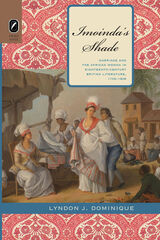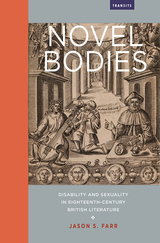2 books about Eighteenth - Century British Literature

Imoinda’s Shade
Marriage and the African Woman in Eighteenth-Century British Literature, 1759–1808
Lyndon J. Dominique
The Ohio State University Press, 2012
As the eighteenth century is entirely bereft of narratives written by African women, one might assume that these women had little to no impact on British literature and the national psyche of the period. Yet these kinds of assumptions are belied by the influence of one prominent African woman featured in the period’s literary texts.
Imoinda’s Shade examines the ways in which British writers utilize the most popular African female figure in eighteenth-century fiction and drama to foreground the African woman’s concerns and interests as well as those of a British nation grappling with the problems of slavery and abolition. Imoinda, the fictional phenomenon initially conceived by Aphra Behn and subsequently popularized by Thomas Southerne, has an influence that extends well beyond the Oroonoko novella and drama that established her as a formidable presence during the late Restoration period. This influence is palpably discerned in the characterizations of African women drawn up in novels and dramas written by late-eighteenth-century British writers. Through its examinations of the textual instances from 1759–1808 when Imoinda and her involvement in the Oroonoko marriage plot are being transformed and embellished for politicized ends, Imoinda’s Shade demonstrates how this period’s fictional African women were deliberately constructed by progressive eighteenth-century writers to popularize issues of rape, gynecological rebellion, and miscegenation. Moreover, it shows how these specific African female concerns influence British antislavery, abolitionist, and post-slavery discourse in heretofore unheralded, unusual, and sometimes radical ways.
[more]

Novel Bodies
Disability and Sexuality in Eighteenth-Century British Literature
Jason S. Farr
Bucknell University Press, 2019
Novel Bodies examines how disability shapes the British literary history of sexuality. Jason Farr shows that various eighteenth-century novelists represent disability and sexuality in flexible ways to reconfigure the political and social landscapes of eighteenth-century Britain. In imagining the lived experience of disability as analogous to—and as informed by—queer genders and sexualities, the authors featured in Novel Bodies expose emerging ideas of able-bodiedness and heterosexuality as interconnected systems that sustain dominant models of courtship, reproduction, and degeneracy. Further, Farr argues that they use intersections of disability and queerness to stage an array of contemporaneous debates covering topics as wide-ranging as education, feminism, domesticity, medicine, and plantation life. In his close attention to the fiction of Eliza Haywood, Samuel Richardson, Sarah Scott, Maria Edgeworth, and Frances Burney, Farr demonstrates that disabled and queer characters inhabit strict social orders in unconventional ways, and thus opened up new avenues of expression for readers from the eighteenth century forward.
Published by Bucknell University Press. Distributed worldwide by Rutgers University Press.
Published by Bucknell University Press. Distributed worldwide by Rutgers University Press.
[more]
READERS
Browse our collection.
PUBLISHERS
See BiblioVault's publisher services.
STUDENT SERVICES
Files for college accessibility offices.
UChicago Accessibility Resources
home | accessibility | search | about | contact us
BiblioVault ® 2001 - 2024
The University of Chicago Press









